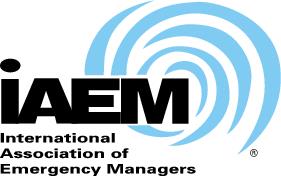"In a world where business continuity is now an integral part of everyday life, the Journal provides a holistic look across all industries at how others manage risk. The insights provided are thought provoking and very practical. During its years of publication, the Journal has grown from strength to strength in both its readership and quality and depth of the challenging articles."
Journal of Business Continuity & Emergency Planning
Journal of Business Continuity & Emergency Planning is the leading professional journal publishing peer-reviewed articles and case studies written by and for business continuity and emergency managers.
Each quarterly 100-page issue combines provocative thought-leadership pieces – which expand what can be achieved with business continuity and emergency management – with detailed, actionable advice and ‘lessons learned’, showing how programmes have been specified, designed, implemented, tested and updated, as well as how interruptions, emergencies and exercises have been managed in practice. The journal focuses on key strategic and business issues – not technical minutiae – with no advertorial or advertising.
Journal of Business Continuity & Emergency Planning is listed, indexed and abstracted in PubMed, Scopus and Cabells' Directories of Publishing Opportunities.
Each issue analyses the latest practice, innovative techniques and leading-edge thinking in:
- Identifying and preparing for new areas of risk
- Business impact analysis
- Defining and protecting mission critical operations
- Crisis communications and decision making
- Reputation risk management
- Natural and environmental risks
- Supply chain risk management
- Pandemics and other public health threats
- Making the business case for plan investments
- Case studies of how plans respond in practice to interruptions and emergencies
- Public-private partnerships and intra-agency planning
- Aligning plans with organisational goals
- Drafting and implementing plans
- Training and awareness programmes
- Plan tests, exercises and updates
- Security and public safety
- Telecoms, records and data infrastructure resilience
Journal of Business Continuity & Emergency Planning publishes in-depth, end-user focused articles and real world case studies written by experienced business continuity and emergency managers who provide insight into current and best practice at blue chip corporations, central and local government and humanitarian agencies. Authors documenting their practical experience, problems encountered, solutions adopted and 'lessons learned' in previous issues have included:
Business continuity managers from: ABN AMRO; Air New Zealand; Amway; Associated Press; BAE Systems; Bank of England; Blue Cross and Blue Shield; BP; Canary Wharf Group; CenturyLink; Cisco; Citigroup; City University, London; Credit Suisse; Cushman & Wakefield; Deutsche Bank; DHL; DTE Energy; eBay; Emirates Group; Ernst & Young; FedEx; Gap; Greater Toronto Airports Authority; Hewlett-Packard; Intel; Johns Hopkins University; Kaiser Permanente; KPMG; Lockheed Martin; Merck & Co; Pfizer; PwC; Sun Microsystems; Target; Union Bank; US Department of State; US Securities & Exchange Commission; Verizon; Vodafone; Walgreen Co; Warner Bros; Wells Fargo; Zurich Financial Services.
Emergency managers from: American Red Cross; Boston Emergency Medical Services; Calgary Emergency Management Agency; Centers for Disease Control and Prevention; ChicagoFIRST; East Central Florida Planning Council; FEMA; Government of Western Australia; Health Protection Agency; Los Angeles County EMS Agency; Merseyside Police; New York City Department of Health and Mental Hygiene; New York City Health and Hospitals Corporation; NHS London; Orlando International Airport; Port of Seattle; Santa Rosa County Division of Emergency Management, Florida; Scottish Government; Southern Methodist University; Surrey County Council; UCLA Health System; US Department of Homeland Security; UNISDR; US Army; World Health Organization.
Essential source material for Departmental Heads, Managing Directors, SVPs, EVPs, VPs, Directors and Senior Managers of:
- Business continuity
- Emergency management
- Risk management
- Emergency planning
- Business resilience
- Disaster recovery
- Crisis management
- Emergency response
- Public health
- Security
- Environment, health and safety
- Homeland security
- Operations
- Financial stability and market infrastructure
- IT and information security; as well as
- CEOs and other C-Suite executives
- Service providers, auditors and consultants





